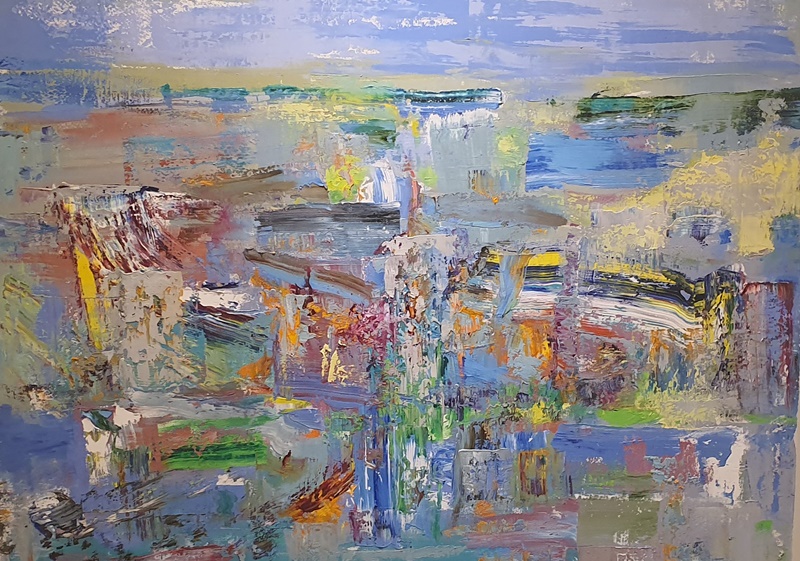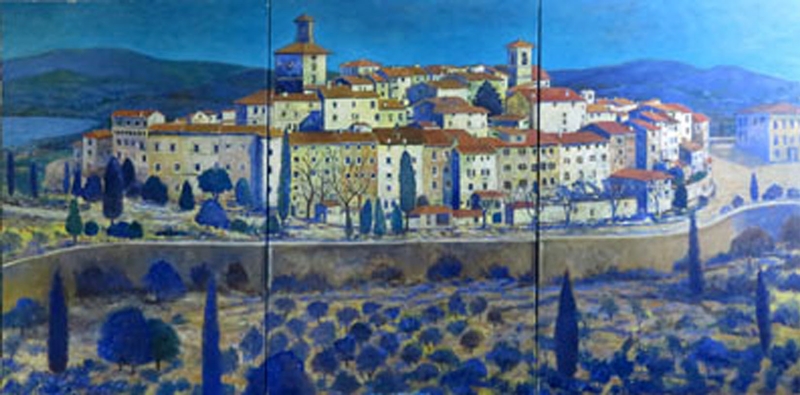Artists Represented
23. Agamemnon-The Return, Oil on Canvas, $2.267
After Agamemnon heads off to Troy, his wife Clytemnestra, spurred on by her resentment of Agamemnon for sacrificing his daughter to Artemis in exchange for favorable winds for his ships, initiates an affair with Aegisthus, Agamemnon’s cousin. Together they plot to Kill Agamemnon after his return from war at Troy.
On his return from Troy Clytemnestra devises a plan to murder Agamemnon. She sews the ends of the sleeves and collar of Agamemnon’s night shirt and while he is getting ready for bed, she stabs him to death, thus avenging the death of her daughter at the hands of her husband’s ambition.

8. A hero's Journey, 153x137cm Price: $8,950
The ‘Hero’s Journey’ is the journey that all heroes must make on the road to self-realization. It is a recurring theme throughout myth and religion. It involves intentionally exposing oneself to, and overcoming, personal challenges and dangers and even death itself. The Hero’s journey takes place against an uncharted and unfamiliar ‘landscape’, sometimes physical, and sometimes psychological, where things are not always what they seem to be.
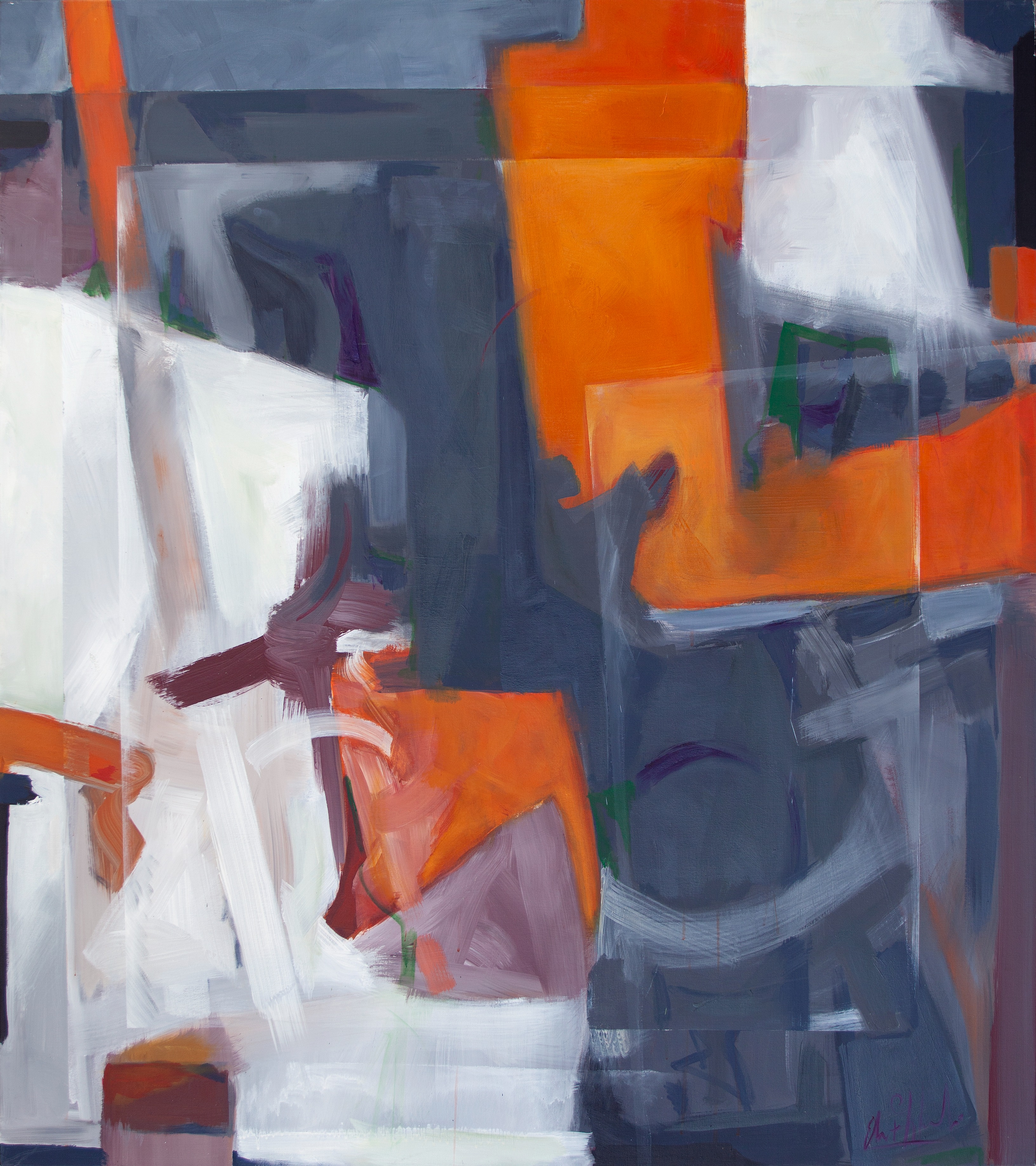
The city of Melbourne is my Muse. Melbourne is also my adoptive city. I came to Australia in 1964 from Chioggia, Venice, Italy. I started my Architectural studies at R.M.I.T. I graduated in Architecture in 1975 and registered as an Architect in 1976.
Melbourne changed a lot since the late seventies. The transformation of the city in the last two decades is beyond what anyone could have ever imagined. I now look at Melbourne from an artist’s perspective: How buildings impact on their immediate surroundings and on the city itself and how the old and the new stand side by side. Do they change the historical character of the street? Does the human get lost in this new environment? Etc, etc.
I think my paintings will speak for themselves and the viewers will see them from their own personal perspectives.
That’s the beauty of Art.
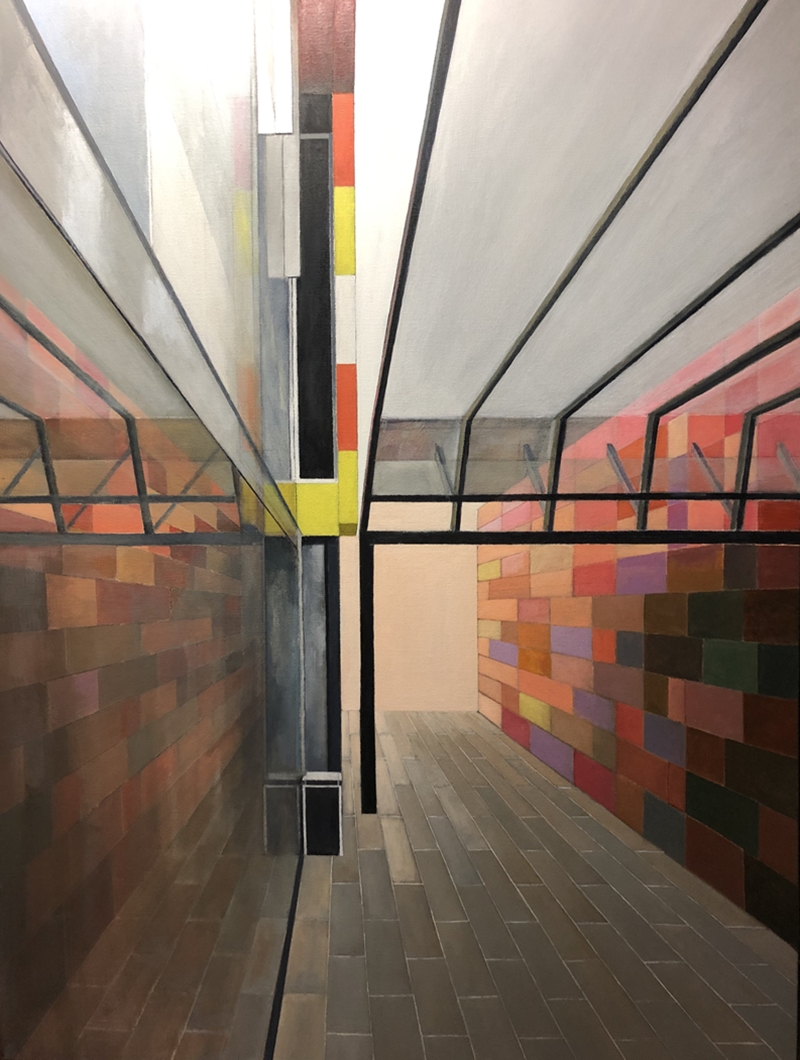
Antonio Balletta
works in a variety of media, large graphite drawings, oil painting s and bronze
sculpture. His images are skillfully rendered, elaborately staged works that
use quiet drama, subtle expression as well as visceral symbolism as a conduit
for both personal and universal narratives.
By emphasizing aesthetics, he wants to amplify the astonishment of the
spectator, he creates compositions or settings that generate poetic images
which ;balance on the edge of recognition
and the subconscious. The images are an invitation into a story. Much of the
symbolism derives from a synthesis of personal experience. Over the years he
has developed a vocabulary of potent signs, each one iconic in its connection
with humanity. Flowers, branches, boats, nests, kangaroos and other curious
creatures populate his work. While his symbols imply tangible things he urges
us to interpret them through our own experiences and mixed bag of memories. A
branch may represent life’s forked and tenuous path yet it may also evoke
metaphors for growth and energy, while the flowers can be read as repositories
for feminine power, fertility and life’s transient beauty. The man in so many
of his images represents himself, his sons and every man. His works appear as dreamlike
images in which fiction and reality meet, allegories merge, meanings shift and
the present fuses. Balletta's art inveigles us into its world through optimism
for life journey. It makes us want to enter into the artists dialogue and
decipher its allegorical tales.
&
6. Apollo, Oil on Canvas , 152x137cm Price: $8,950
Apollo, son of Zeus and Leto and brother of Artemis the moon goddess, also referred to as Helios, was the Greek God of the Sun, Archery , Music , Dance, and Truth. She hunted in the wood under the silvery light of the moon.
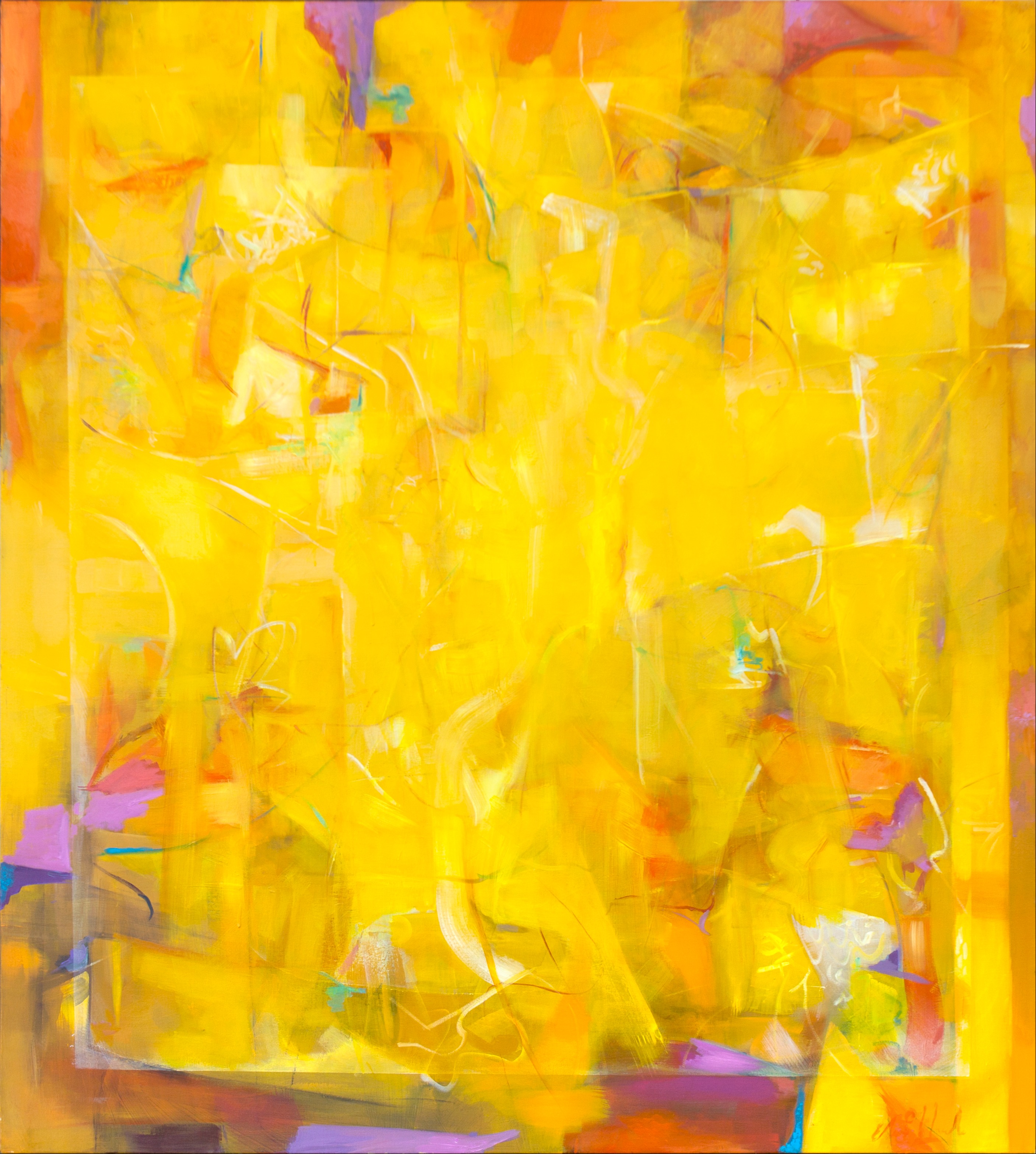
7. Artemis, Oil on canvas, 153x 137cm, Price: $8,950
Artemis, daughter of Zeus and Leto and twin sister to Apollo was the Goddess of the Moon, Archery and Hunting. She ruled the night as her brother ruled the day.

I am interested in the uniqueness of interpreted reality where the human form or the environment is the context and the catalyst for response. I choose to use, interpret and manipulate the human form as subject matter because I want to acknowledge that the Human Form is fundamental in art, and that abstraction is meaningless without an implied Human Form. I find that abstraction, perspective, distortion etc, fail when they do not act as devices for reaching an expressive climax and I understand that abstraction cannot be an end in itself because it cannot exist out of a defined context. My art's practice is concerned with interpreting and distilling figurationinto a succinct narrative to express a sense of actuality, intimacy and immediacyof beliefs and emotions.
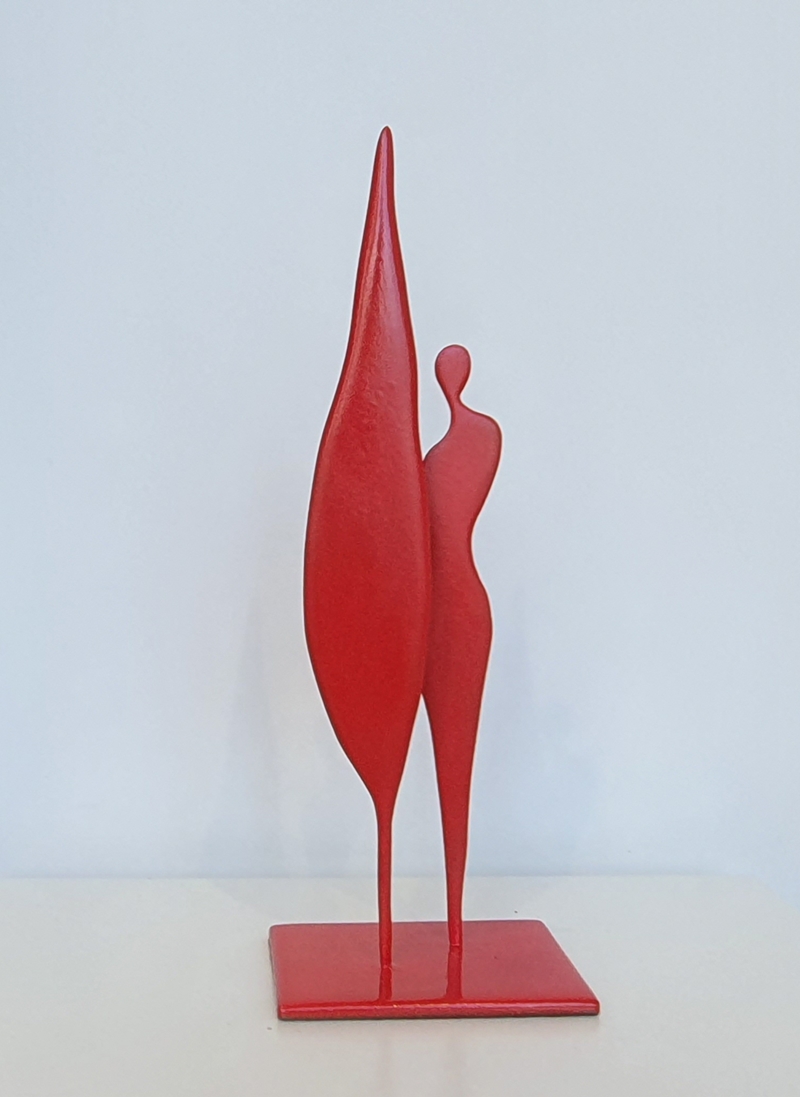
18.Calypso& Odysseus, Oil on Canvas, 137X100cm, Price: $7,750
On his way home from the Trojan war, Odysseus is stranded on the Island of Ogygia, the home of beautiful Calypso, daughter of the Titan, Atlas. Calypso falls in love with Odysseus and detains him for 7 years in an attempt to make him fall in love with her. Odysseus however, notwithstanding Calypso’s promises to make him immortal, yearns to return to his wife Penelope back in Ithaca. Calypso eventually relents and lets him go.
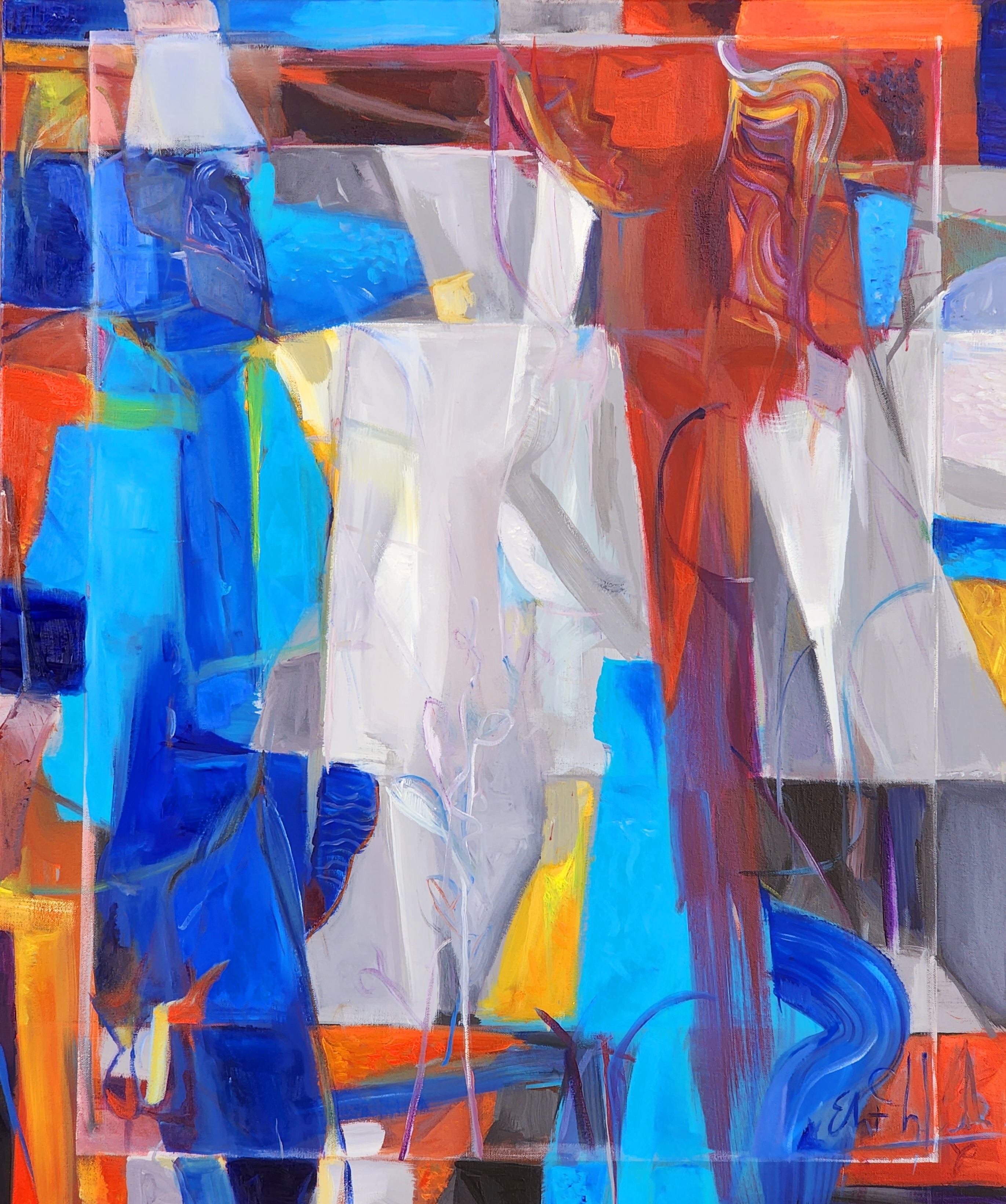
Artist Statement-
‘Beatitude’ is a collection of my latest body of paintings, bringing together several themes I have previously explored in my work over the years. Before I began to put energy toward this exhibition, I had no specific aim or established direction. My only aim was to loosen up and return to early times of being fearless and adventurous. I had only one strict rule...that I would not care about the image so much and that it flowed from my brushes and pallet knives. The works came together on their own from this.
The objects I chose to paint and draw were all intrinsically intertwined in my mind, meaning that they are all connected somehow in my understanding and appreciation of them. They overlapped and swam around in my thoughts for years. They are things that bring me wonder and joy.
Quite by accident three clear themes emerged from the body of work.
The first theme to emerge is my love of the natural world, being the living plants on earth. Nature is utterly wonderful. I have an affinity for nature's colours, patterns, and organic flowing lines. I love the asymmetry. Each element is a complex and a perfect mathematical algorithm.
As with most subjects I draw and paint, I cannot help but zoom in and magnify them. I am instinctively drawn in close to my subject. I crop objects tightly, looking for an intimate understanding of line and form. I don't have any interest in painting rolling hills or sweeping clouds. For me, zooming out would miss so much of the "good stuff". I can't help but focus in on one part of an object and tend to draw things quite large. I want to get as close to the action as possible. I fix my eyes firmly and it's as though I am relying on the sensation of touch, even though it's really only my eyes that are seeing.
I try to stay honest in my work and have the courage to make honest mistakes. I draw lines that may be incorrect, which I then redraw and rub away. I also try to capture the splendour, the colours, the light etc. elements that give me joy. I try to share them with the viewer.
The second theme that emerged is the gift of fruit. Without thinking too much about it I am always in awe of this miracle. It gravitates around fertility, sustenance, and goodness. The fruits of the earth are amazing and plentiful. It breaks my heart to think that these fruits are not evenly distributed.
For me, the cycle of life on earth (as opposed to surrounding dead planets) is mind blowing. "Ancient Fruit" (sketch of a pomegranate) is an ode to this millennia old cycle as well as a subtle reference to knowledge, consciousness, rebirth and original sin. Lemons and limes are everyday fruit but equally worthy of being painted as divine objects. I have placed them front and center as such.
The third theme to emerge in these works is my ongoing affinity to the humble vessel. These simple lines depicting a container or bowl have many deep undertones for me. The vessel represents an object that contains things, be it water, fruit, food etc... These images can be perceived by the viewer as empty or ready to hold the harvest. I gravitate toward this object for the essential role it has in our lives. It holds our daily meals, stores and preserves crops and water or taking the idea further, lakes and oceans are contained, and ultimately life itself is somewhat contained within the stratosphere. These paintings are echoes of the concept in my mind, of "holding", yield, plenitude and emptiness.
I hope you enjoy the energy in this show. It was completely enjoyable painting it.
Camillo De Luca
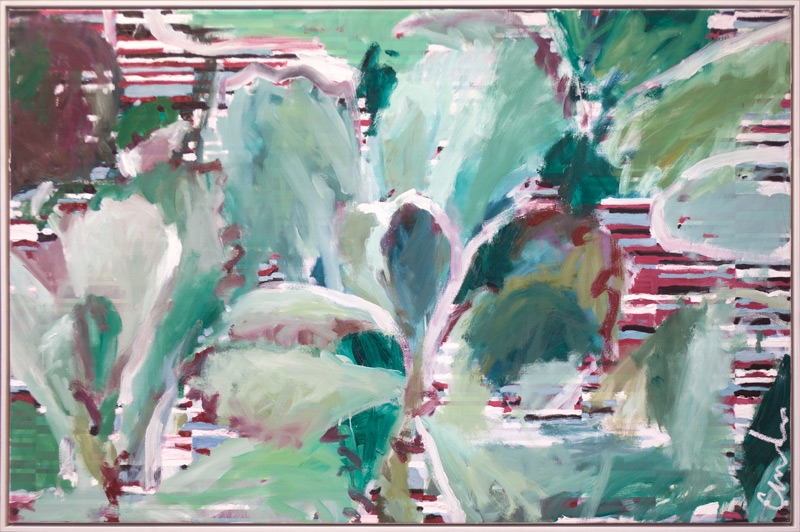
Artist’s Statement
David Freney-Mills – Gallery Elysium 2021
Through his paintings, Melbourne artist David Freney-Mills explores the visual properties of text. He does this via painting layers of ink on Mulberry paper, choosing a single word for each painting. Through fragmenting and repeating the text he creates abstract arrangements that convey a sense of flux and transformation. Freney-Mills’ paintings are akin to organisms made up of accumulated layers and traces of decisions. In different paintings the text overlaps in chance combinations, weaving throughout the atmospheric surfaces created by the artist.
Freney-Mills uses text to represent matter and it’s shifting nature as a vehicle for energy. The text is also evocative of human consciousness in a state of constant re-invention, absorbing perceptions of colours and light from the outside world while also focused within it’s inner space, both outer and inner worlds have frontiers for awareness to push into, in both directions a void is contemplated, not a sterile void but one fertile with possibilities from which all forms, all ideas and realizations come.
_2021.jpg)
10. Dionysian Reverie, Oil on Canvas, 153x137cm , Price: $8,950
The ancient Greeks (and later the Romans) held festivities in honor of the God of wine and intoxication, Dionysus. The ‘Bacchanalia’ as the Romans referred to it after Bacchus, their name for Dionysus, was a drunken celebration where celebrants indulged in pleasures bestowed on them by the God through his gift of wine.
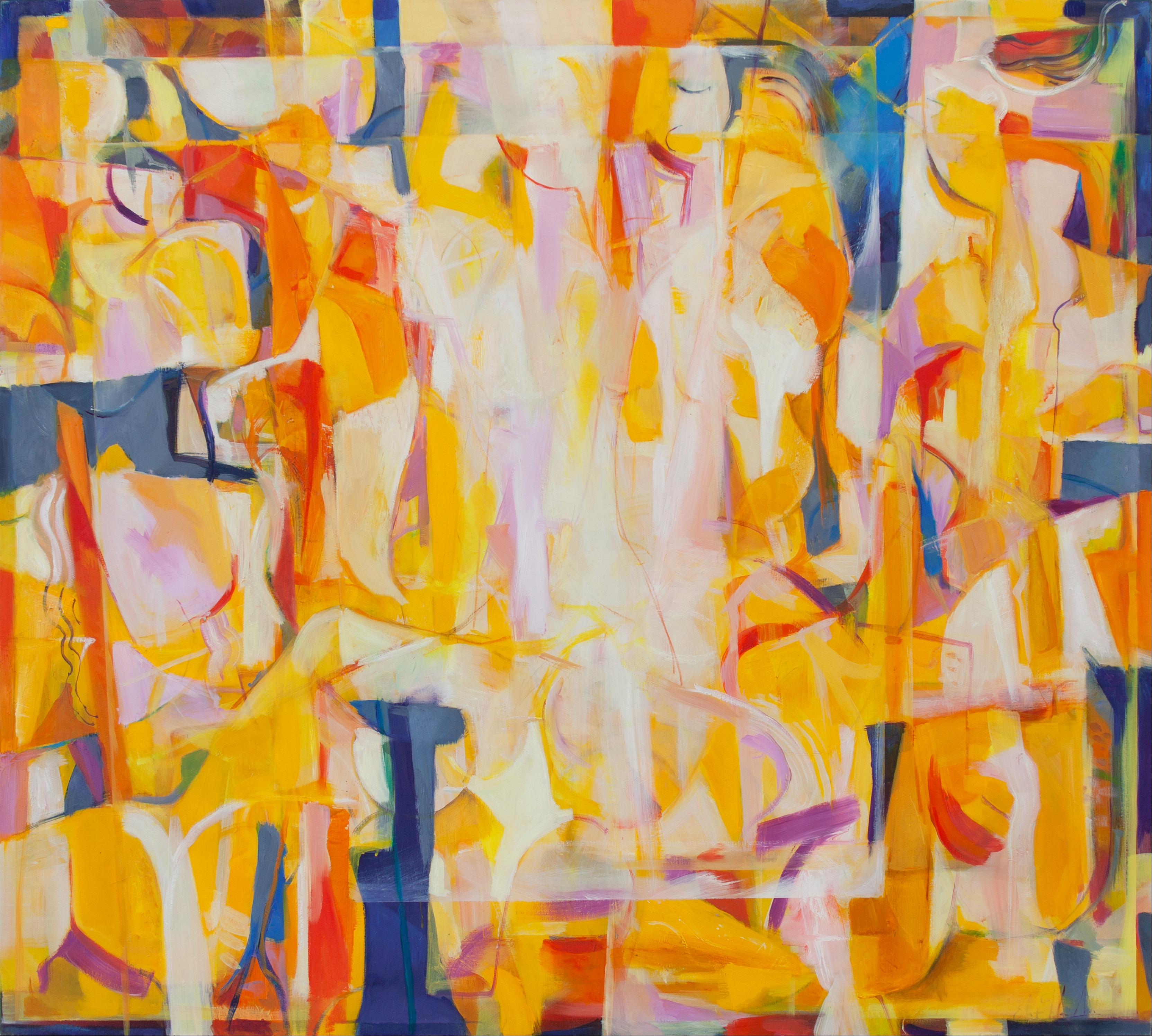
Mythos.
An exhibition by Elio Sanciolo.
Introduction
Ever since we as humans developed a sense of ourselves as rational creatures with a need to understand our purpose and individual and collective place in relation to the world, we have wondered about the nature of existence and how things came to be as they are.
Our individual and collective life experiences inform us about what we can actually know about the world in detail at any particular moment in time, but there are things beyond our direct perception due to the innate limitations of our senses, that we can never fully understand, or know at all with any certainty.
The indistinct, and mysterious void that exists between our certainty about the world and what we can only infer about the world indirectly is the domain of myth and religion, and it is this nebulous area that I chose to explore for this last of a series of exhibitions dealing with time, perception, and memory. In this instance, cultural memory.
As was the case in the previous two exhibitions (‘Future Memories’ and ‘Opus’) , I was not concerned so much with exploring what we see, but rather how we perceive, recall, and construct our experiences of the world, through the filter of culture, time, and memory.
In order to do this, I looked at narratives and characters taken from the products of our collective cultural memory as memorialized in myth as a source of compositional inspiration. Hence the name and theme of this exhibition.
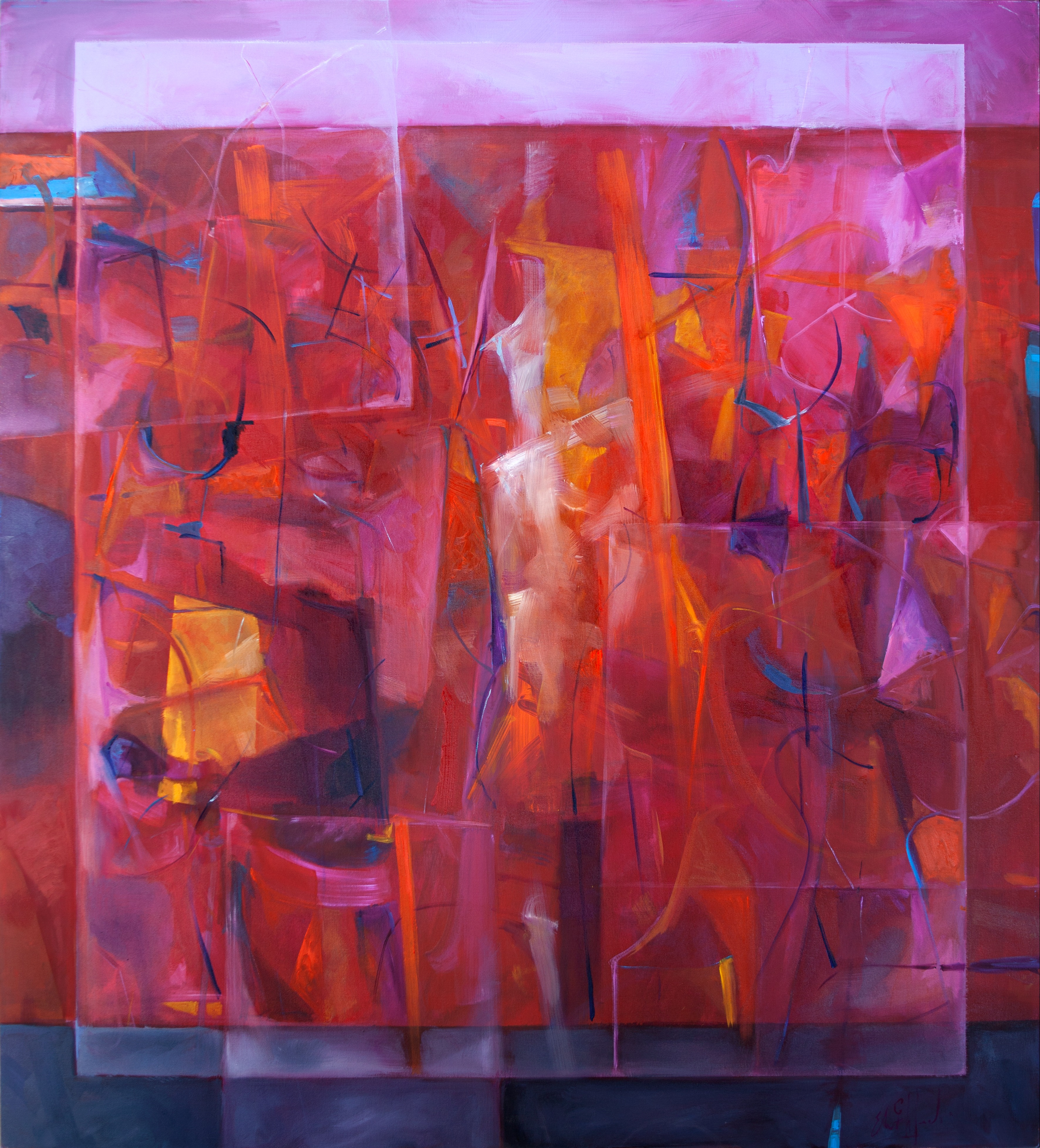
“I use painting as a tool to explore and play with ideas and connect me to culture and history. I do this to discover who and what I am, the nature of the world and my place in.”
'The artistic process is the distillation of conscious and unconscious experience through the filter of the body which is in turn embedded in a transient reality.'
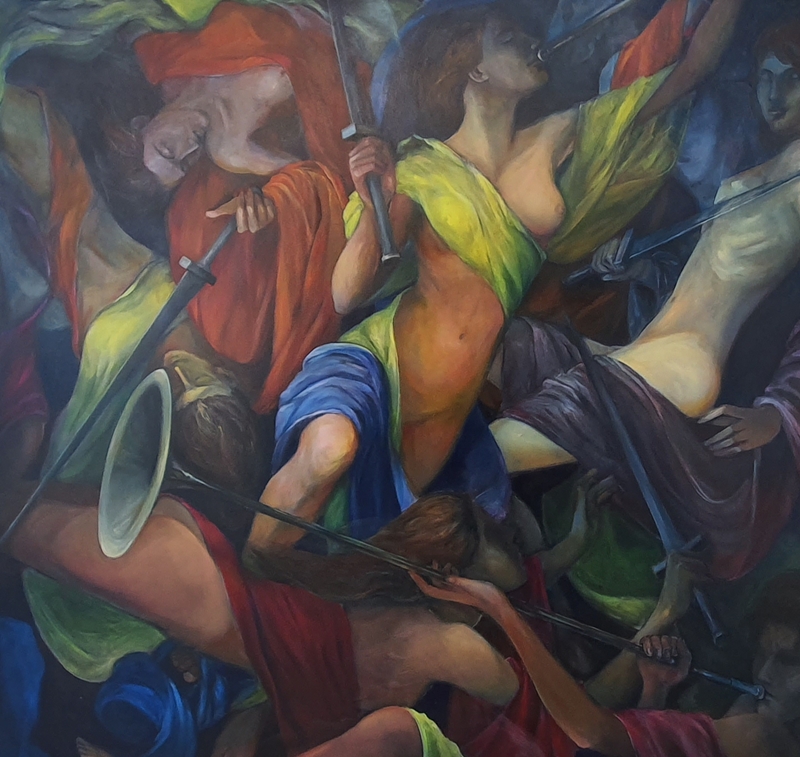
“I use painting as a tool to explore and play with ideas and connect me to culture and history. I do this to discover who and what I am, the nature of the world and my place in.”
'The artistic process is the distillation of conscious and unconscious experience through the filter of the body which is in turn embedded in a transient reality.'

‘OPUS’
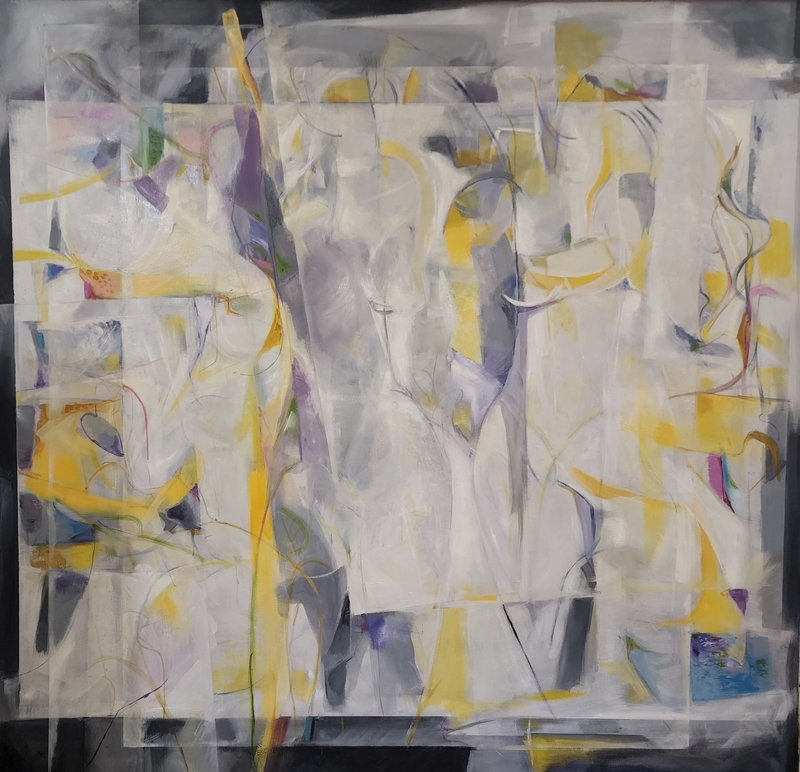
13. Eros & Psyche, Oil on Canvas, 153x137cm Price: $8,950
Eros, also known as Cupid by the Romans, was sent by Aphrodite (Venus) to punish Psyche for being as beautiful as she was. Eros’ mission was to shoot Psyche with one of his arrows so that she would fall in love with a monster. Eros, however, accidentally pricked his finger with one of his own arrows and immediately on seeing her fell in love with Psyche.
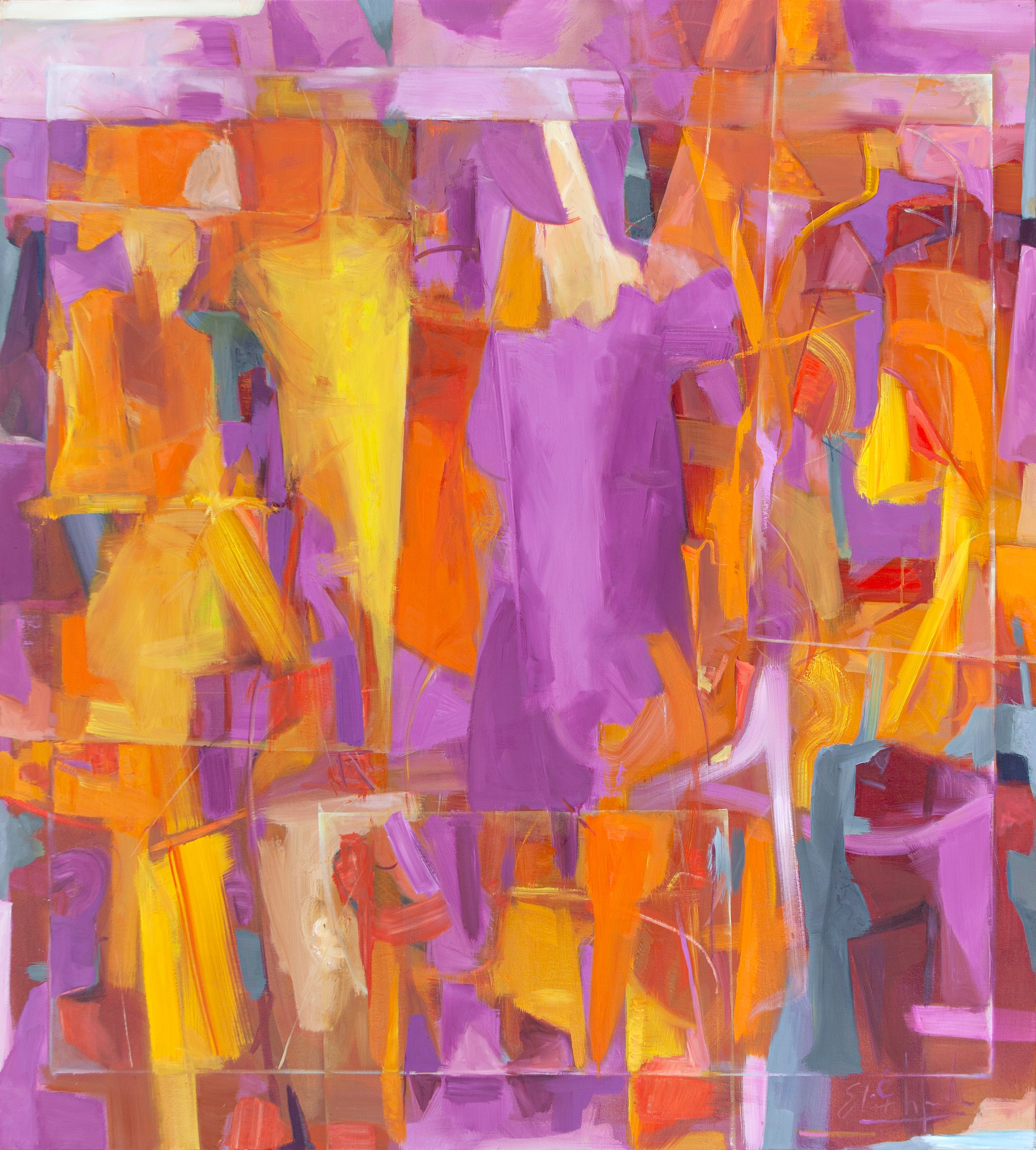
17.Gaia, Oil on Canvas, 137x100cm Price: $7,750
According to myth Gaia was the ‘Earth Mother’, ancestral mother of all life. She is the mother of the Titans, therefore ancestor to the Olympian Gods themselves. She is the personification of the earth and nature. The Romans referred to her as Terra.
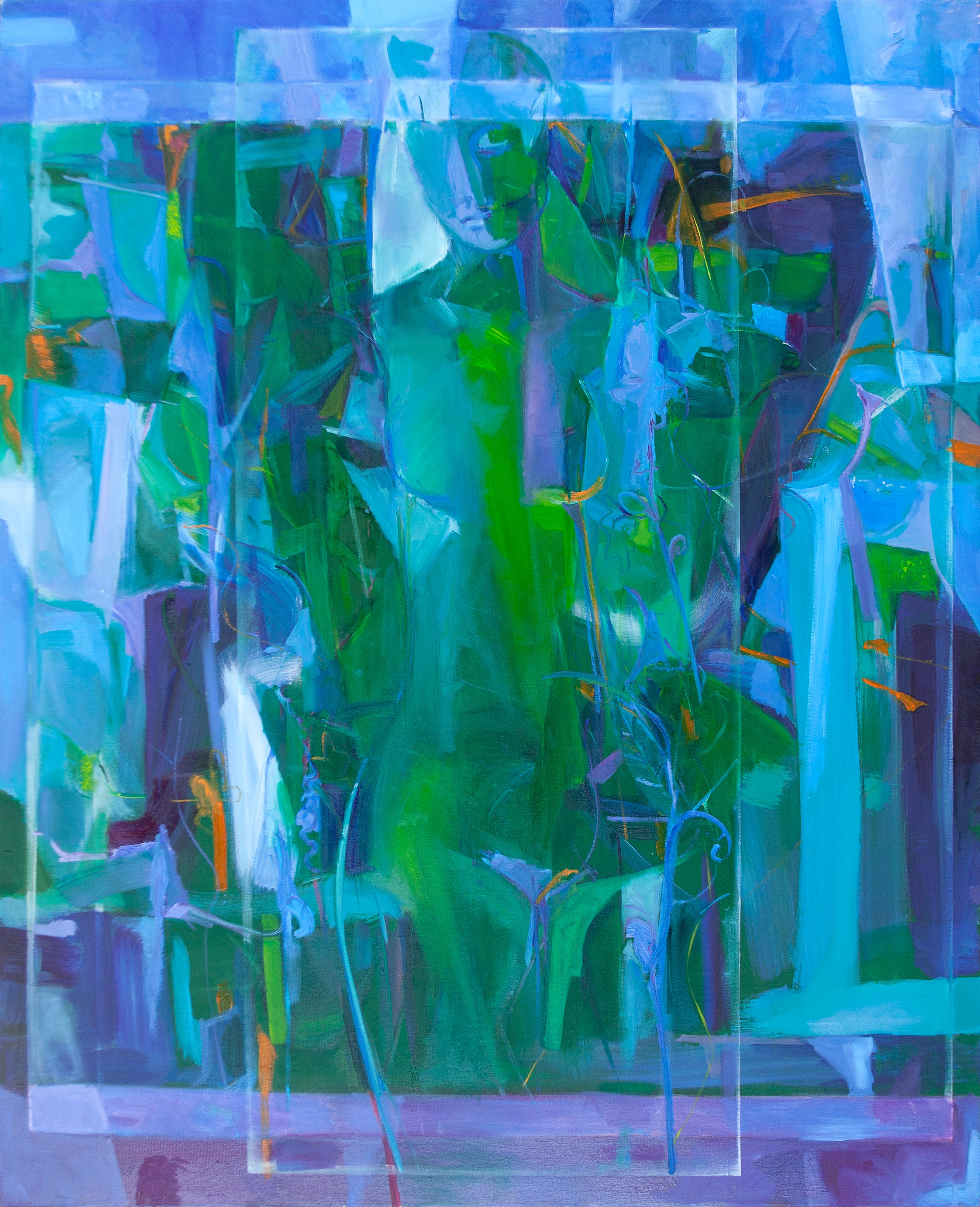
The questions occur. How to paint nothing? What does it mean to paint nothing? What does it mean to paint a void?
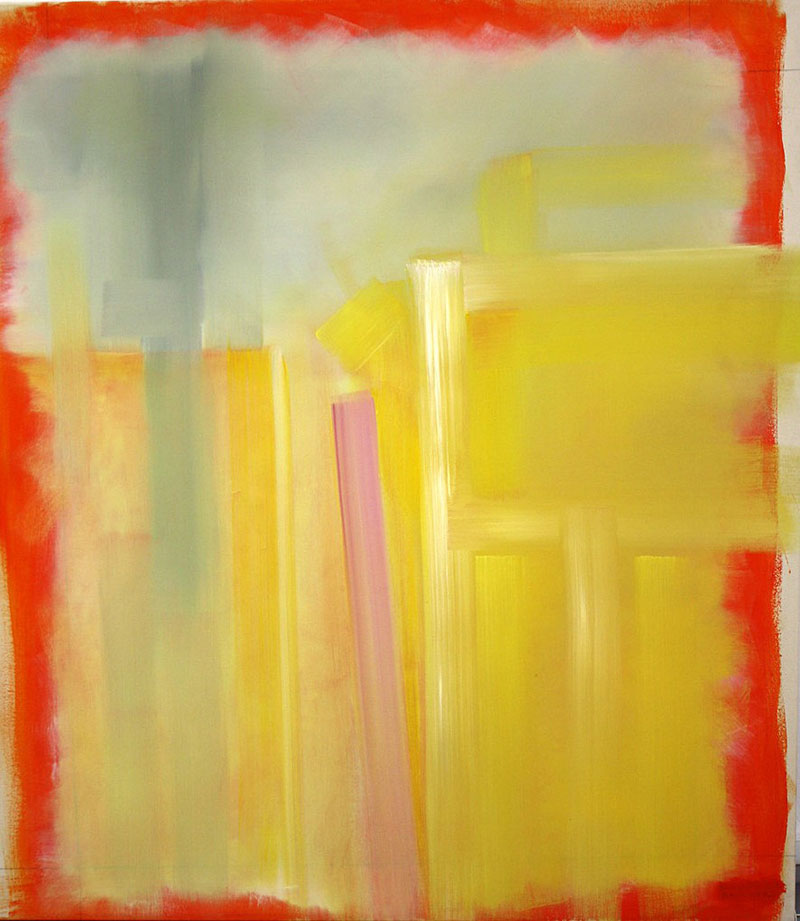
I let myself go, apply marks, streaks, splashes of colors onto the canvas, to make them resonate with all the intensity that can be imagined.
